Summary: Satisfying coastal and forest birding with some decent scenery
Dates of visits: May 15 2021, Nov 5 2022
Noosa National Park consists of three separate sections, of which the headlands is the largest. It is situated immediately to the east of the resort town of Noosa Heads, and is in fact within easy walking distance of it. There is a very decent network of tracks here, so you’re rather spoiled for choice and can choose an out-and-back or a circuit that’s to your liking. Or just walk all day…

When approaching from the northern side of the headlands (ie. the north-west), car parking can be problematic. You can park in town (see map) if you are reasonably early and/or lucky, or try for the much smaller National Park car park, which has 60 or so car parks, which sounds like a lot but it fills up very, very quickly, and you will be competing with surfers and walkers (and maybe even other keen birders!). The congestion in and out of this area is particularly acute on weekends and during holiday periods.
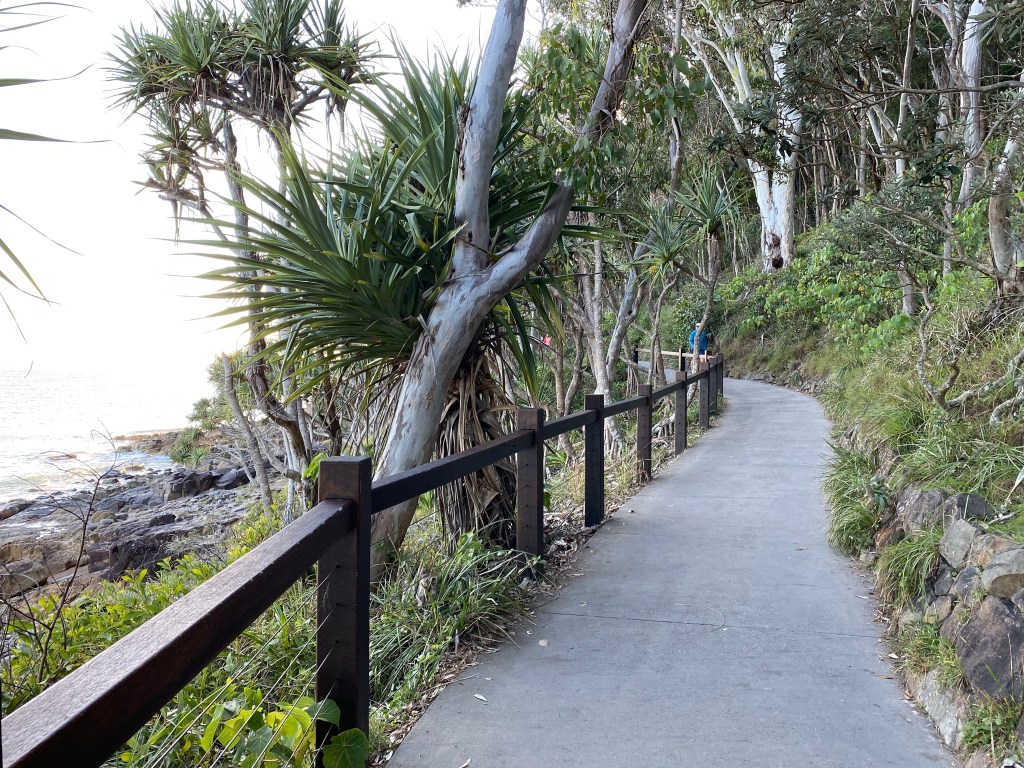
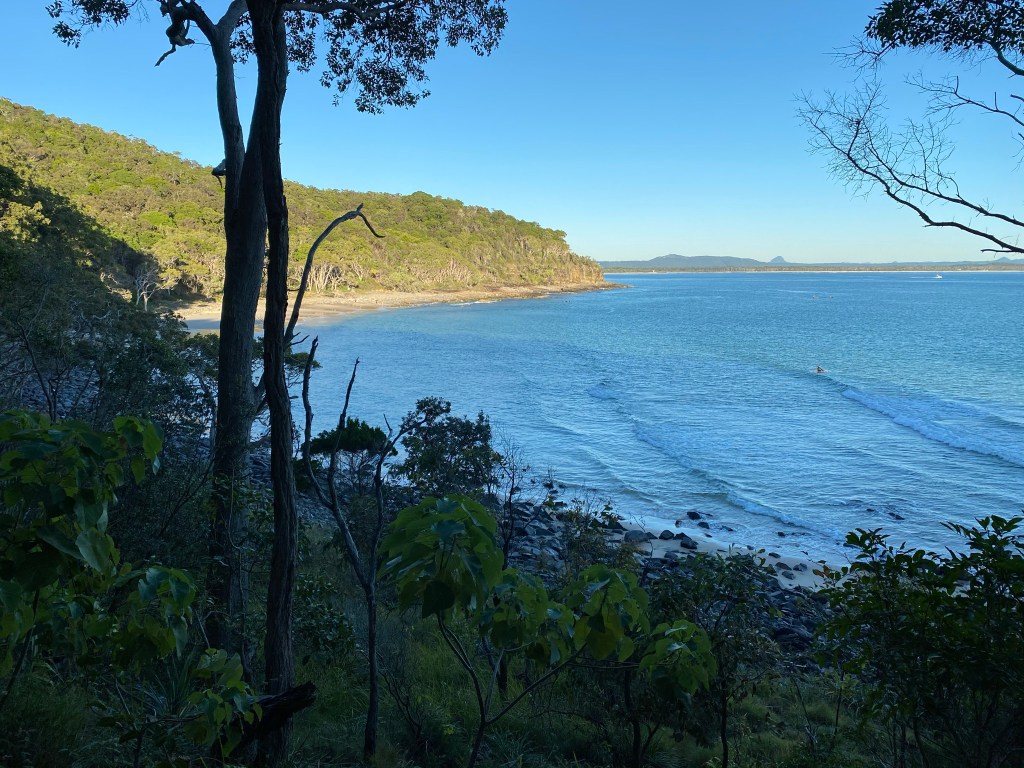

The coastal walk at the northern end is definitely the busiest and attracts surfers wandering to the various beaches with boards under their arms, as well as joggers, hikers, families, you name it. Occasionally there are swimming and triathlon events in this area too, which is when things get out-of-control-busy. The first parts of the walk have smooth, sealed paths; they are sealed up to Dolphin Point (about 1.2km), and gravel/sand thereafter. There is a public toilet at about the 900m mark.
On our visit of May 2021 where we started at the northern end and aimed to do a long circuit clockwise, the first birds we saw were common ones: a Pied Currawong looking wolf-like in the trees, and a Torresian Crow strolling along the beach (not something you see every day). This section can contain a lot of shadow; you’d be walking towards the rising sun if doing the track in this direction, so if it’s early you won’t get proper sunlight for quite a while.

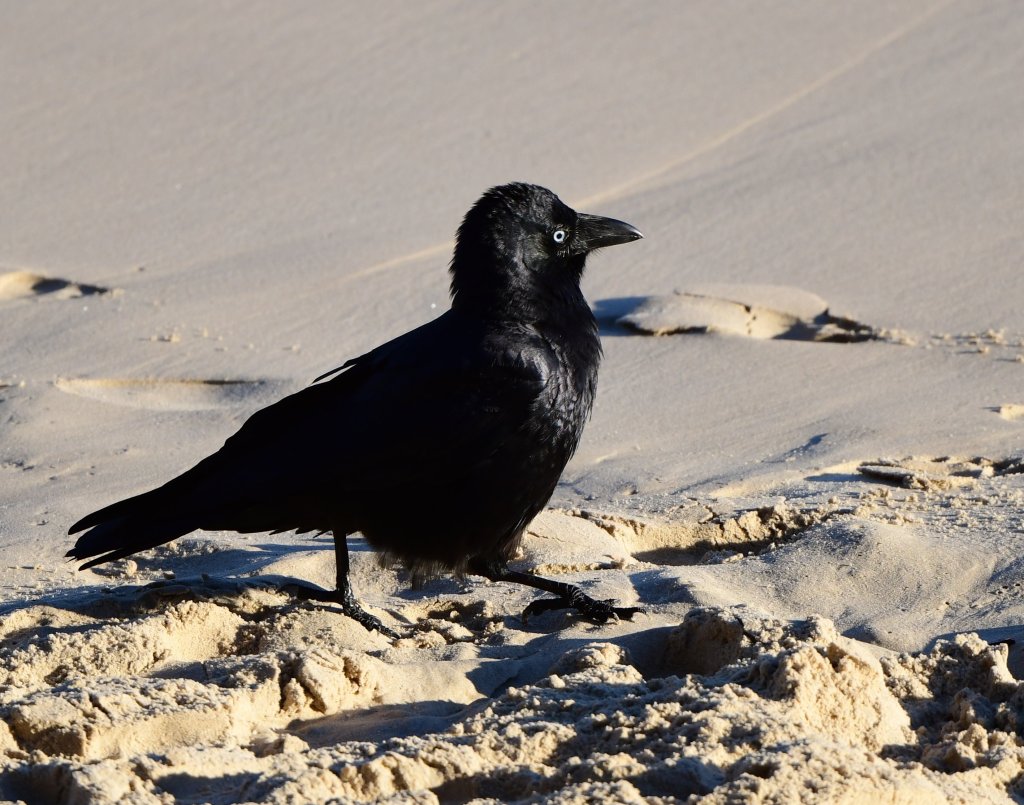
It is hard to understate just how busy this path can get. If having lots of people around inhibits your enjoyment of birds and nature, then this strip of coastal walk may not be for you!

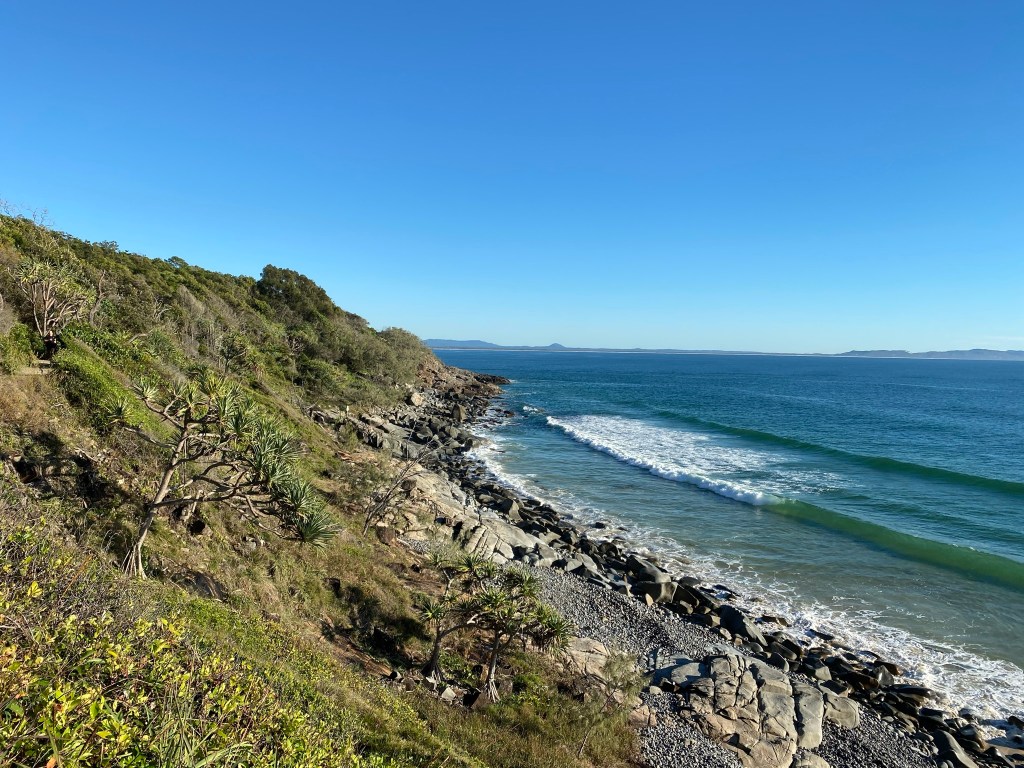

Once into the unsealed parts of the trail, the coastal boobialla and banksia along with other wind-blown scrub become a bit more interesting for photography, as the bush is not very tall and you can nab pictures of birds atop various branches. Such was the case with Rainbow Lorikeets and Blue-Faced Honeyeaters roaming around looking for the best nectar, while a Willie Wagtail or two made their agitated scratchy warning calls in response to the incursions.



Even with all the banksias along the hillsides, there was quite some competition for the juiciest flowers, especially from the numerous and very vocal Brown Honeyeaters.


The extreme north-eastern tip of the headlands and the scenic highlight of the coastal walk is undoubtedly Hell’s Gates, a rocky cliff with surging foam at its base. This whole area is rather pleasant to linger at, and is a good spot to look for passing seabirds (terns, shearwaters, and gannets in the winter) and also Humpback Whales between June and November.



The headlands are also the province of Noisy Friarbirds (we counted 16 all up on the walk), as well as a surprising number of Spangled Drongos (8 in total).
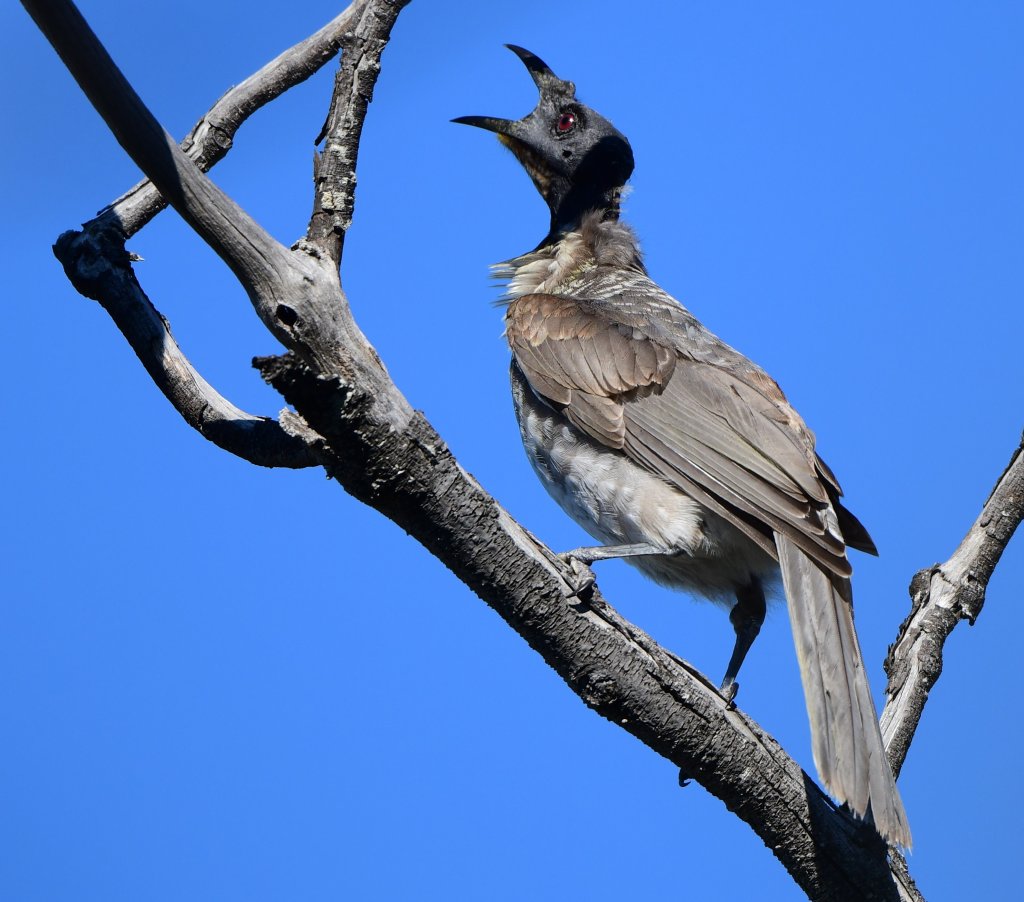
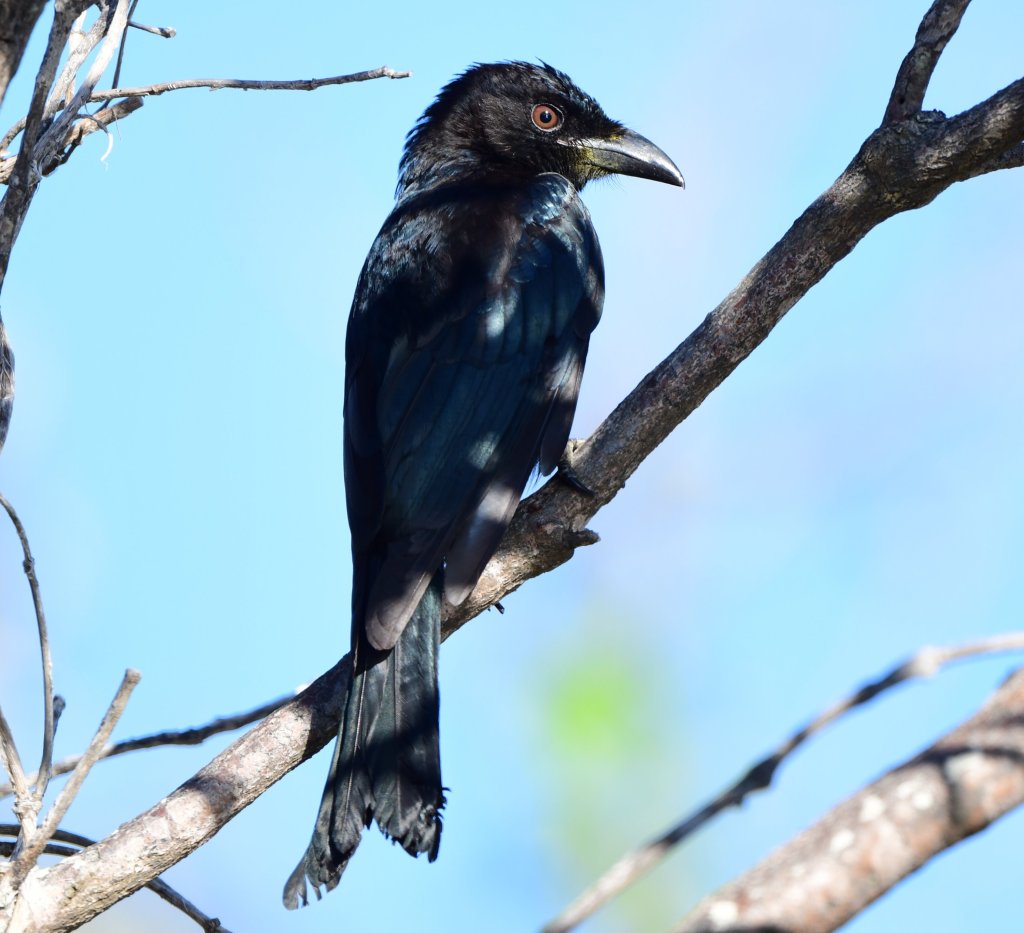
Heading back inland via the long Tanglewood Track, the vegetation is denser than you may perhaps expect, perfect habitat for Rufous Shrikethrush (formerly called Little Shrikethrush). In fact we saw three of these birds, which was a real treat; they outnumbered the single Grey Shrikethrush spotted.


Kookaburras were in attendance too – we counted at least five on the walk, all in the more heavily forested sections.

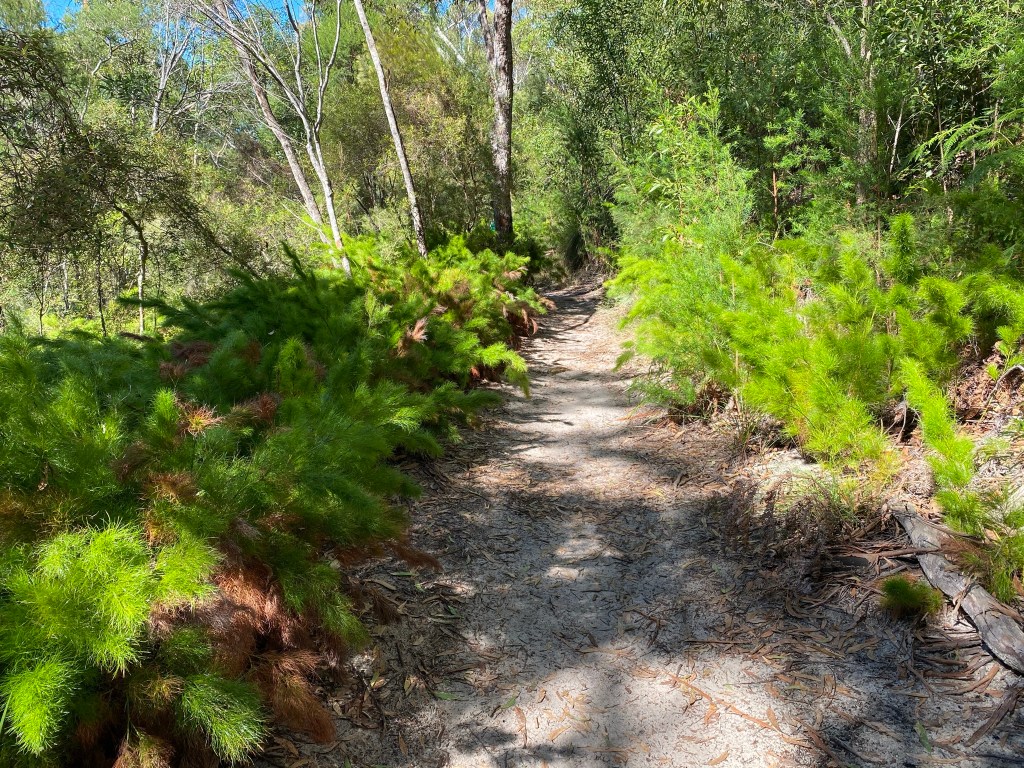
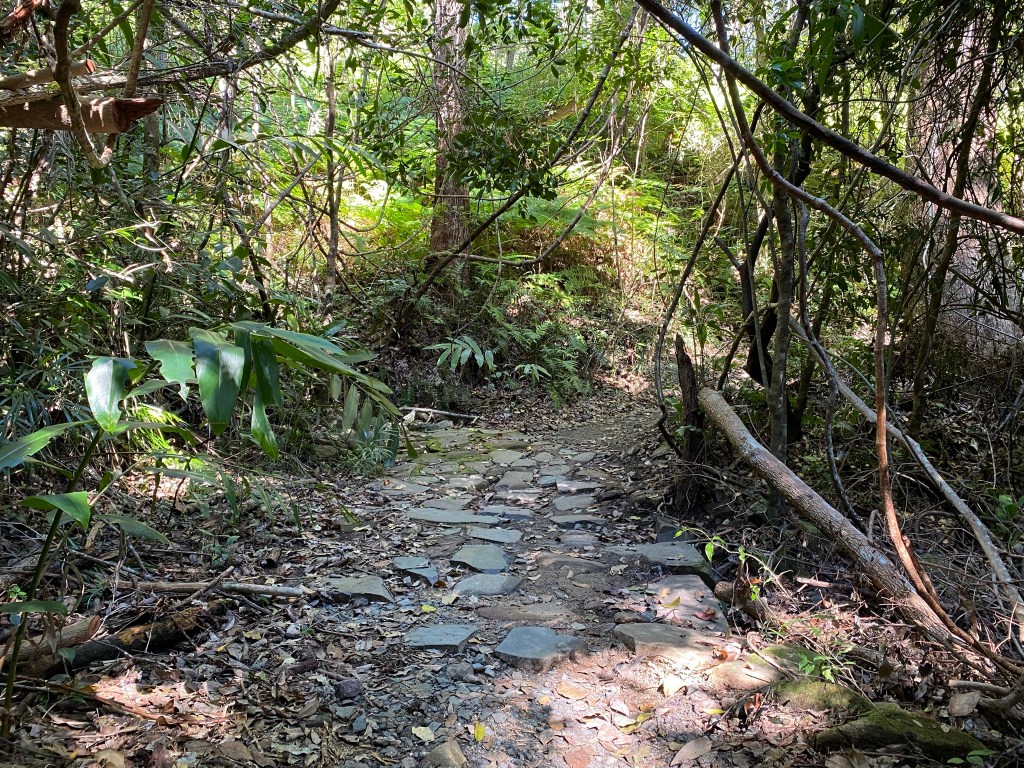
The Tanglewood Track is really pleasant with several changing moods as tangles of vines give way to gorgeous green understorey – where we saw a group of five Silvereye pass through. The walking surface is sandy with the occasional treacherous tree root crossing (on one occasion we saw a jogger trip on one).



There are fewer people on the non-coastal tracks, though it can still be fairly busy. You may also be lucky enough to encounter koalas or echidnas (we didn’t).
As the track curls back around and up (ie. north) towards the car park starting point, there was some much thicker rainforest where Large-Billed Scrubwrens were seen, Whipbirds heard and Golden Whistlers and more Spangled Drongos observed as well. There are some boulders and ferns and slightly steeper sections here.
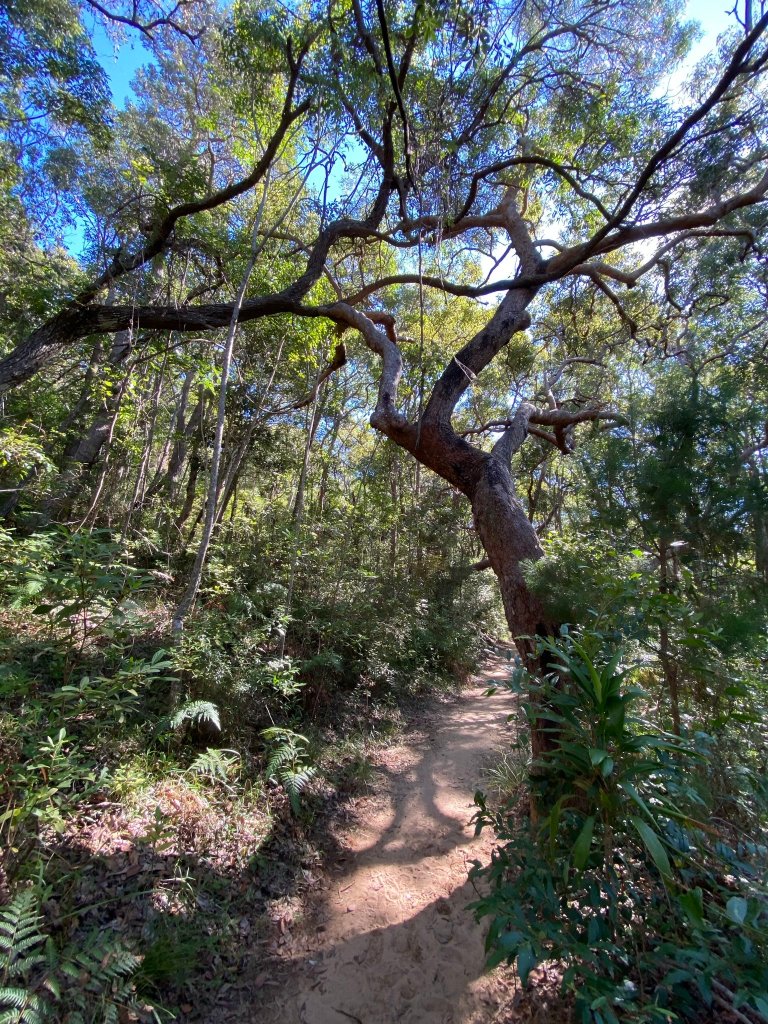


We saw 35 species on this first walk, including one raptor (a White-Bellied Sea-Eagle) and one seabird (a Silver Gull). I’m sure with more patience we might have seen some terns or suchlike.
On our Nov 2022 foray into the headlands National Park we entered from the south, at the very top end of Sunshine Beach. There are several small entry points here and only limited street parking – we chose McAnally Drive and it was easy to park, at least at our start time of 6:40am.



Once again Noisy Friarbirds were the most obvious bird around, but apart from them it was harder to pick out the smaller birds, which were especially prevalent at the creek line where the entry track hits the Alexandria Bay Track. We had Variegated Fairywrens and Brown Thornbill here, though it took quite some patience to identify them as such.

It felt a little quiet for birds for a while, just the occasional Brushturkey for company and the call of the friarbirds. The trail was still quite heavily forested until reverting to the lower coastal bushland as we neared the water at the south end of Alexandria Bay.



Along this coastline at the south-east of the national park, there are a few notable features like Lions Rock and Devil’s Kitchen. The beach is rather nice and not at all crowded compared to the northern end of the National Park.



Quite a few Crested Terns were working the waters of the bay, ranging right along it, though we did not see any other seabirds.
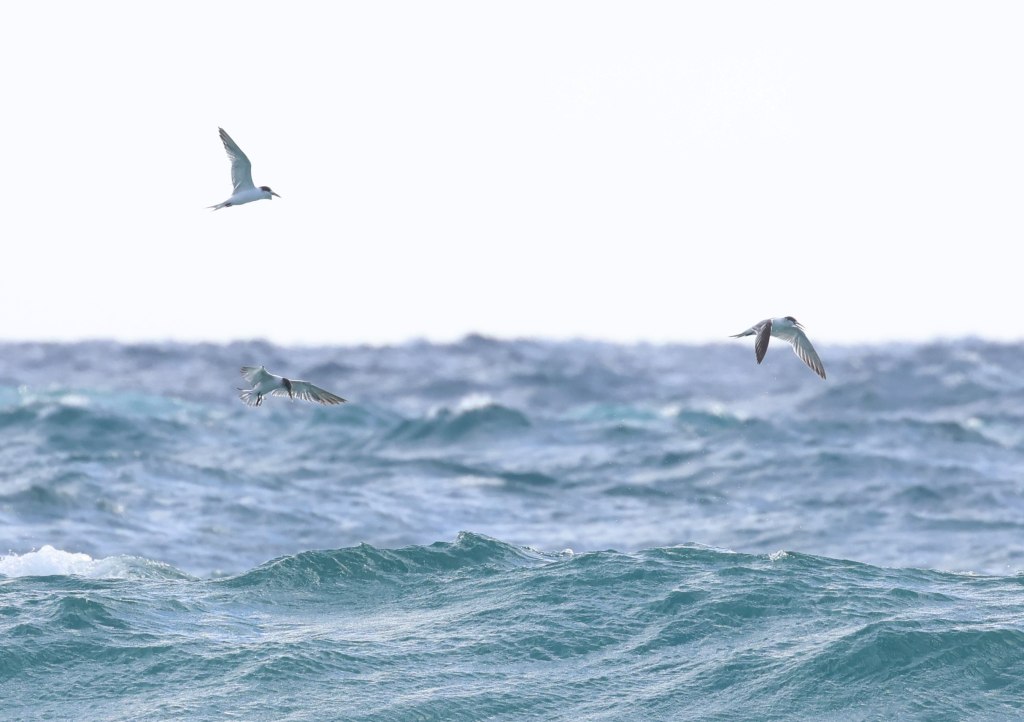
We headed back up into the forest again, checking our map frequently. Most trails here are sign-posted, though not at every intersection. We found some Figbirds and an Eastern Yellow Robin around this border zone.
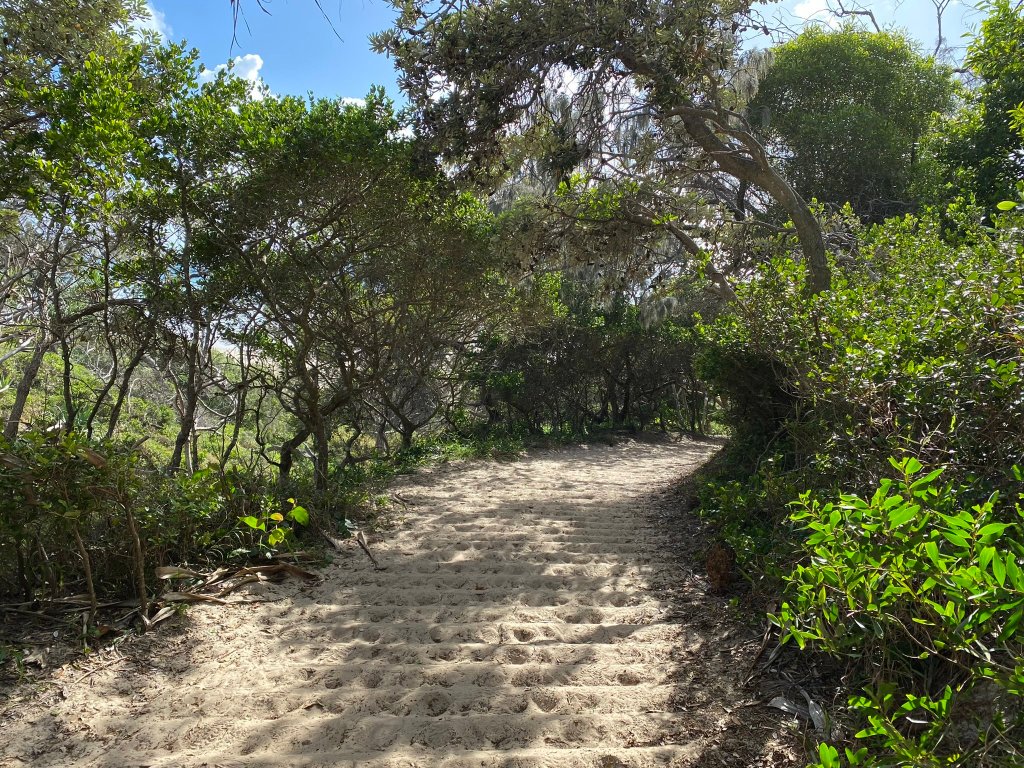


It is quite sandy underfoot here and the forest feels more coastal and sparse; as often happens in drier sections of bush, there are long bouts of quiet where you wait for a flurry of bird activity, and this was the case for us for a long while. Not much happening except a few calls in the upper canopy; then suddenly there was Pardalote action, Little Wattlebirds, a couple of White-Cheeked Honeyeaters, and a cuckoo which we heard incessantly calling and thought to be a Shining Bronze – much tracking down of the bird eventually confirmed our suspicions.
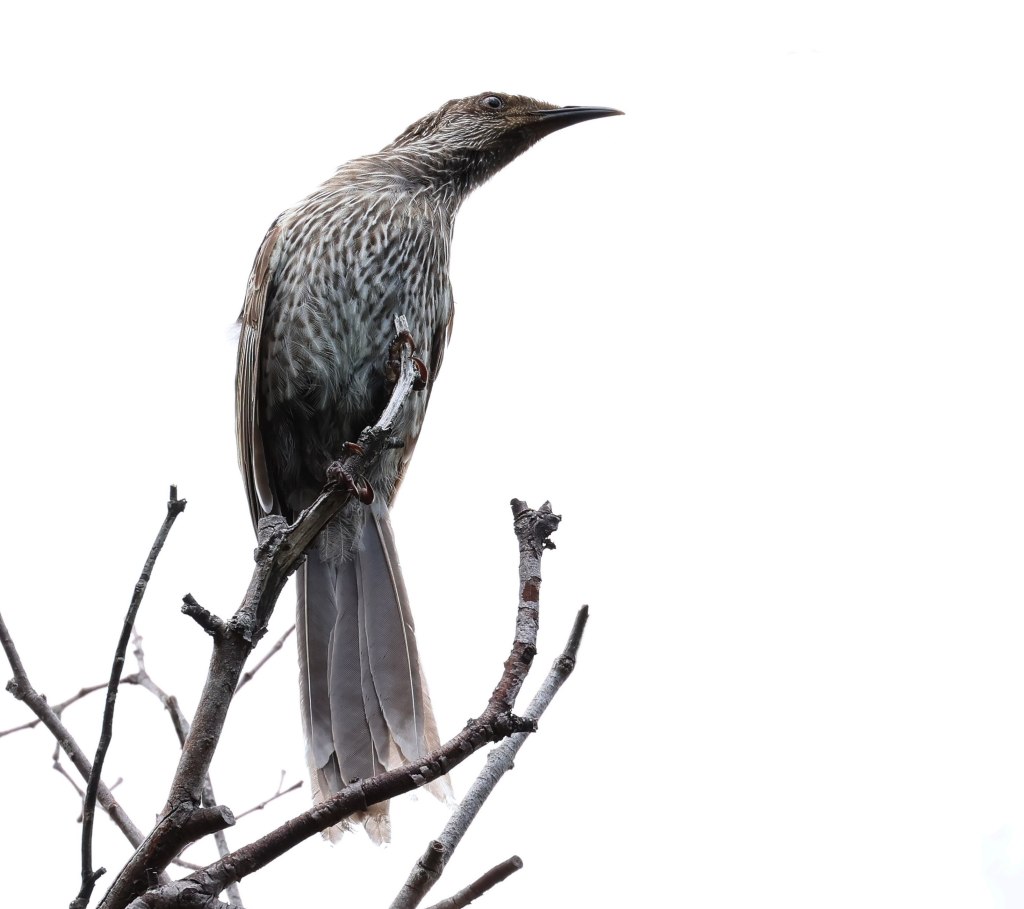

There wasn’t a whole lot of notable bird activity after that, and we finished by making a loop back towards McAnally Drive. We had picked up 20 species in just under an hour and a half.
Summary
Noosa Headlands National Park is a pretty enjoyable spot for birding, especially if you appreciate coastal scenery and some variety in your forests. Coastal scrub and banksia, drier forest and even a decent section of rainforest are available. Consequently there is some variety in the birdlife too, with seabird watching as a possibility, and plenty of regulars like honeyeaters, kookas, drongos, and many more; there is even a surprising frequency of Black-Breasted Buttonquail here, according to eBird. It can get quite busy, and some sections can be very quiet, but there is a substantial amount of terrain to explore and bird here.
eBird:
Hotspot: Noosa National Park–Headland Section (202 species)
Checklists for these visits: May 15 2021 (35 species), Nov 5 2022 (20 species)
Pluses and minuses:
+ Lovely coastal and forest scenery
+ Good variety of birds including seabird spotting
+ Proximity to Noosa township and beaches/accommodation
– Lots of people walking the tracks
– Can be difficult parking at the northern end
– Some sections can be patchy for birds
AUTHOR: ANDY GEE
BIRDERS: ANDY GEE, K-A
